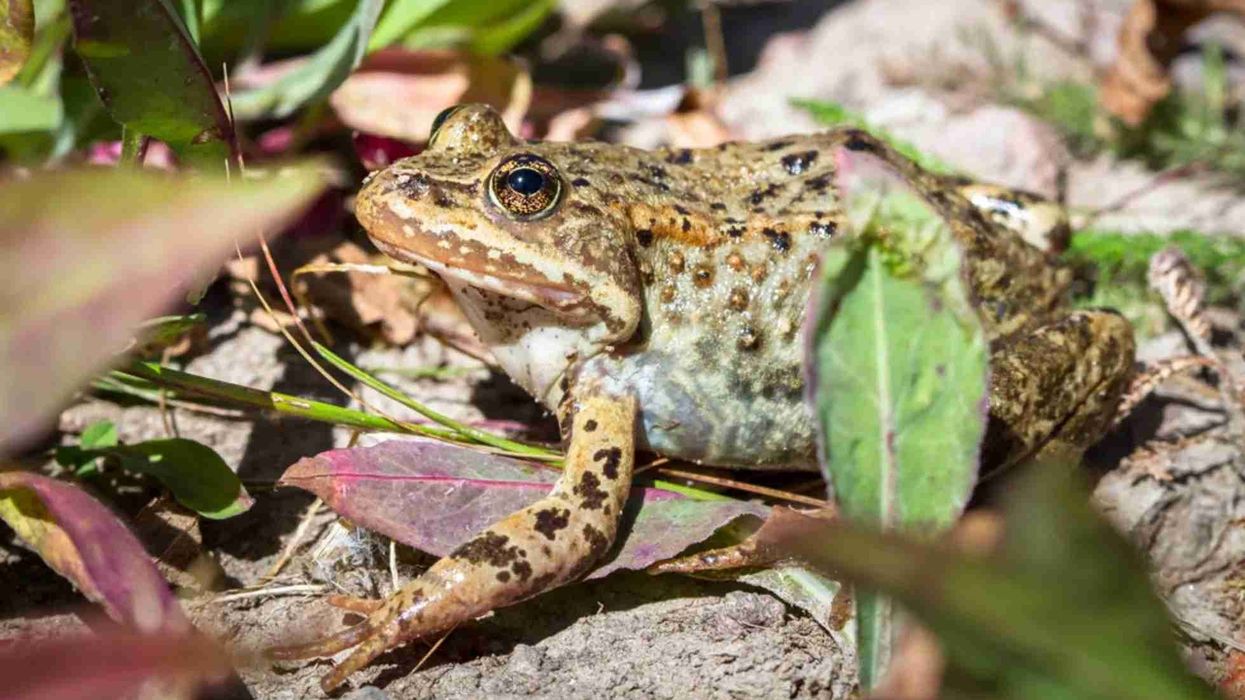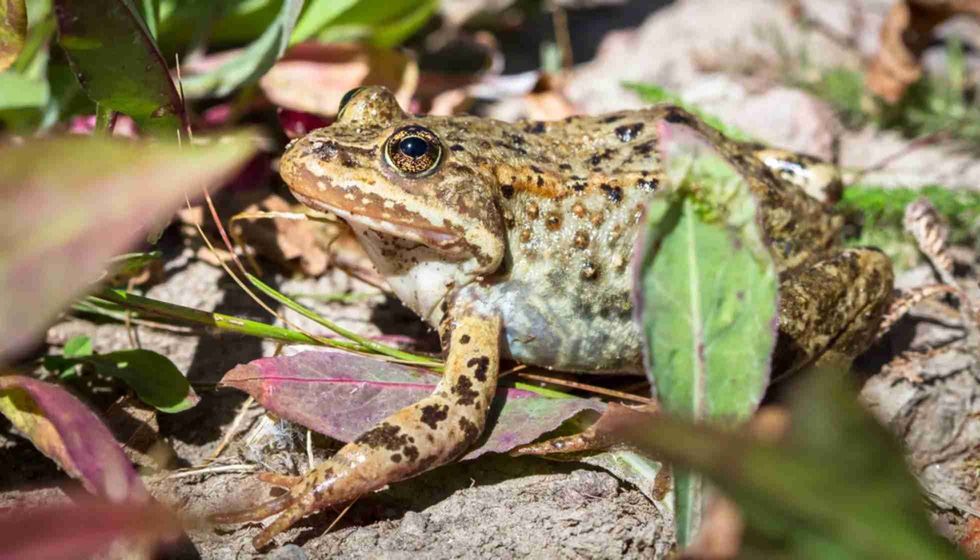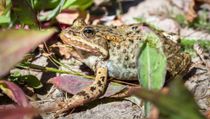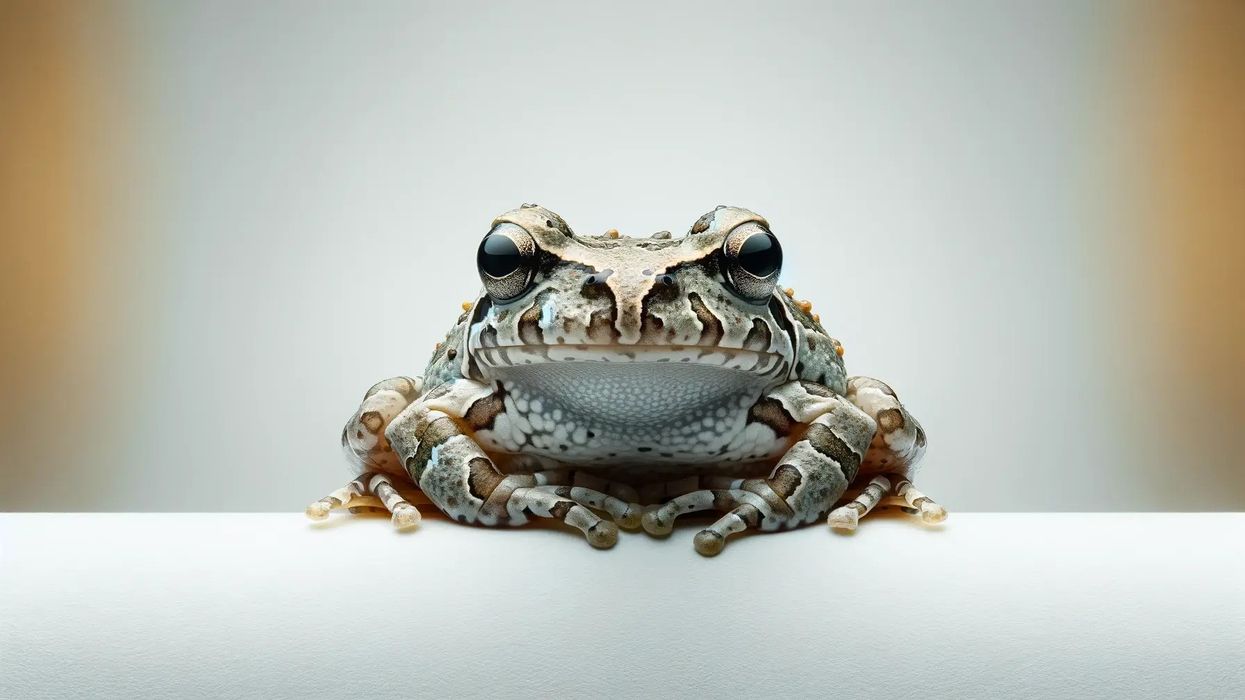Fun Columbia Spotted Frog Facts For Kids
Columbia spotted frogs are a species of frogs from North America. These amphibians belong to the Ranidae family and Rana genus. Columbia spotted frog, Rana luteiventris, is the scientific name for this species.
Columbia spotted frogs (Rana luteiventris) are typically found near permanent water bodies such as natural ponds, lakes, marshes, and streams. Even within this habitat, they require special conditions to thrive.
Adult Columbia spotted frogs can be found in seasonally flooded sites. The range Columbia spotted frog distribution is in western North America, from the state of Alaska, British Columbia, to the state of Washington, Idaho, as well as parts of the state of Wyoming, Nevada, and Utah.
The spotted frog is a medium-size species of frog with black spots on its back and legs, which gives it its common name. The color of its skin can range from dark, olive-green to light brown and it differs from other frogs of the Rana species because of its upturned eyes, short back legs, and narrow snout.
Read on to know more about the Columbia spotted frog (Rana luteiventris). For more interesting animal facts, check out our articles on the natterjack toad and spadefoot toad.
Columbia Spotted Frog Interesting Facts
What type of animal is a Columbia spotted frog?
Columbia spotted frogs are a species of frog from North America from the Ranidae family and Rana genus. The scientific name for the Columbia spotted frog is Rana luteiventris.
In 1996, David M. Green and his team published a study on the spotted frog genetics and concluded that there were two sibling species of the spotted frog: the Oregon Spotted Frog (Rana pretiosa) and the Columbia Spotted Frog (Rana luteiventris).
What class of animal does a Columbia spotted frog belong to?
Columbia spotted frogs belong to the class of amphibians in the animal kingdom.
How many Columbia spotted frogs are there in the world?
There is no accurate estimate of the Columbia spotted frog population in the world. However, four distinct Columbia spotted frog populations are recognized today: Northern, Great Basin, Wasatch, and West Desert.
When it comes to the Oregon spotted frog Rana pretiosa species, more than 90% of the population has disappeared from its former range. Historically, this species had 63 populations, but today, only 13 populations of the Rana pretiosa species are left, with one population found in Washington state and the other 12 populations found in Oregon.
Where does a Columbia spotted frog live?
This amphibian species can be found near permanent water bodies such as natural ponds, lakes, marshes, and streams. Even within this habitat, they require special conditions to thrive.
The population of adults can be found in seasonally flooded sites.
Their populations range in western North America, from the state of Alaska, British Columbia, to the state of Washington, Idaho, as well as parts of the state of Wyoming, Nevada, and Utah.
They can be found east of the Cascade Mountains, Bighorn Mountains, the Mary’s, Reese, and Owyhee River systems, Wasatch Mountains, as well as the western desert of Utah.
What is a Columbia spotted frog's habitat?
These populations are rarely found straying away from permanent water bodies such as natural ponds, lakes, marshes, and streams. Their population's habitat range is in western North America, from the state of Alaska, British Columbia, to the state of Washington, Idaho, as well as parts of the state of Wyoming, Nevada, and Utah.
Wet, riparian areas that have shallow, standing water and emergent vegetation are ideal for these amphibians. In these ponds or permanent water, foraging and breeding can take place among adults, with the vegetation providing shelter as well as protection from predators.
Who do Columbia spotted frogs live with?
These diurnal frogs are usually solitary creatures, although they do come together while breeding.
How long does a Columbia spotted frog live?
The natural lifespan of these frogs can range between 3-13 years, depending on geographical location. In Yellowstone National Park, male Columbia spotted frogs have lived for up to 10 years while females have lived for 12-13 years.
In Nevada, females have lived for up to seven years while males lived for three years or less. Generally, the colder the climate, the shorter the lifespan.
How do they reproduce?
Males of this species achieve sexual maturity between one and four years, while females reach the reproductive age between two and six years. The breeding season for this species is usually between late February and early July, although the specific time periods differ on the basis of elevation and geographical location.
In British Columbia for example, breeding occurs in February at sea level. In Utah, breeding takes place in mid-March at an elevation of 1,395 m (4,577 ft) and in Wyoming, breeding takes place between May and June at elevations of 2,377 m (7,799 ft).
The presence of emergent vegetation is necessary for breeding. Reed canary grasses and cattails are the types of vegetation required for breeding.
Males make calling sounds, a type of chorus or song, to attract females. This can range from clicks to glottal sounds. Males reach breeding spots first and determine the oviposition before females of reproductive age arrive.
Using their front feet, males grasp females behind the forelimbs. They can stay this way for days until eggs are laid in shallow water.
The eggs are fertilized by males externally. These large egg masses can have anywhere between 200-500 eggs, although some have been found to have as many as 2000 eggs by one female Columbia spotted frog. Females leave after creating their egg masses, but males stay on to mate with other females.
These egg masses grow to the size of a softball after absorbing water and hatch into tadpoles within the range time of 5-21 days. Metamorphosis is a part of their natural life cycle. Eggs are usually 10-12 mm in diameter and laid in water that is 10-20 cm deep.
Embryo development is sped up by the raised temperature created by algae around the egg masses. Tadpoles measure 8-10 mm long when they hatch from the masses and take cover in the vegetation.
Metamorphosis begins when tadpoles are about 70-75 mm long. The metamorphosis from tadpoles to frogs is completed in 56-209 days, the number of days varying on the basis of environmental conditions as well as location.
What is their conservation status?
With regard to the conservation status of the Columbia spotted frog, the IUCN has given it the status of Least Concern. While their numbers aren't considered to be threatened, their population is declining due to several factors.
Columbia Spotted Frog Fun Facts
What do Columbia spotted frogs look like?
These medium-sized frogs vary in color from dark olive green to light brown. Their rough to smooth skin texture comprises small folds along the back.
Black spots can be seen on the legs and back of these dark olive green to light brown colored frogs. A white or off-white ventral surface with bright pink or salmon-colored lower abdomen and hind legs can be seen in this species.
A white or yellowish stripe runs along their upper lip and they have upturned eyes with a narrow snout. Tadpoles are usually brownish-green in color with gold spots prominent.
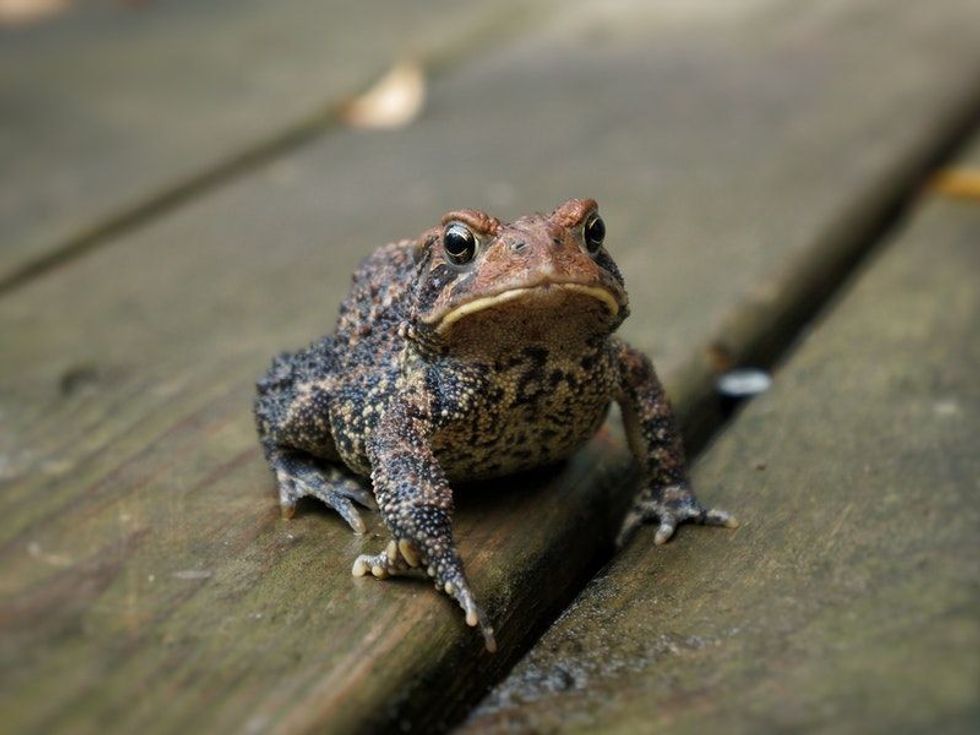
How cute are they?
If you're the kind of person who considers any species of frogs cute, you are likely to find this medium size frog species cute too.
How do they communicate?
These frogs communicate vocally via calls. Males call out to females in a chorus during the breeding season. They also have a recognizable alarm call. Their perception is also guided by chemical, vibrational, and visual channels.
How big is a Columbia spotted frog?
Adults of this species are of medium size. The range of their length depends on whether it is a Columbia spotted frog male or female. Males are usually 80 mm long while females can measure up to 100 mm in length. The range length of this species can be 1.8-3.9 in (46-100 mm).
How fast can a Columbia spotted frog swim?
Information for this isn't available.
How much does a Columbia spotted frog weigh?
Males usually weigh 47 g as adults while females tend to weigh more like 103 g.
What are their male and female names of the species?
Males and females of this species don't have separate names. They are referred to as the Columbia spotted frog.
What would you call a baby Columbia spotted frog?
A baby Columbia spotted frog is called a tadpole or polliwog.
What do they eat?
These frogs don't stray beyond 10-12 m of a water body and feed within this environment. More than 50% of their diet comprises insects like ants, moths, grasshoppers, beetles, and wasps. They also feed on crustaceans, earthworms, mollusks, and arachnids.
They catch insects quickly with the help of their long, sticky tongues. The larvae eat algae, organic debris, and plant matter. Oregon spotted frogs (Rana pretiosa) also eat mainly insects, with larvae feeding on algae and organic debris.
Are they poisonous?
No, Columbia spotted frogs are not a poisonous species of frog.
Would they make a good pet?
While these amphibians are not aggressive and are small enough to house, they don't make good pets because of the specific habitat requirements that they have. Caring for a Columbia spotted frog is not easy because specific temperatures must be maintained and an appropriate habitat needs to be provided.
While conservation efforts are being made by authorities, home care of this species as pets is not advisable, in the interest of the frog.
Did you know...
Columbia spotted frogs hibernate and aestivate, regardless of whether they are in Idaho, Washington, or any of the other locations in which they are found. Hibernation takes place in spring-fed ponds that have willows.
The Columbia spotted frog winter hibernation ends when temperatures have been between 13-16°C for a few days. They then migrate to breeding grounds that are not that far apart.
Natural predators of spotted frog adults, whether the Rana luteiventris or the Rana pretiosa, include herons, bullfrogs, and garter snakes. Columbia spotted frog tadpoles or larvae are typically consumed by diving beetles, garter snakes, larvae of dragonflies, as well as fish.
Several parasites like lung flukes, leeches, and nematodes use Columbia spotted frogs as hosts.
Why is the Columbia spotted frog endangered?
Their numbers aren't considered to be threatened, but their population is declining due to several factors. Climate change is making permanent water availability less certain. Fragmentation of forest environment, wetland degradation, and water diversion are other factors threatening the population.
Habitat destruction resulting from the clearance of forest area for cattle grazing is another major issue threatening their status today. Disease from the chytrid fungus Batrachochytrium dendrobatidis also threatens their numbers. Non-native predators like freshwater fish and bullfrogs have also been introduced which has put their population on the decline.
What sounds do Columbia spotted frogs make?
Males call out to females in a chorus during the breeding season. This mating call comprises six to nine low-pitched clucking or knocking sounds from above and below the surface of the water. The calls get louder when there is another frog approaching.
A release call is sounded if they're ever held by the back while they make an alarm call when they are attacked by predators. This is in the form of a six-second shriek. They don't have many other ways to defend themselves from predators.
Here at Kidadl, we have carefully created lots of interesting family-friendly animal facts for everyone to discover! Learn more about some other amphibians including the poison dart frog, or marine toad.
You can even occupy yourself at home by drawing one on our columbia spotted frog coloring pages.
We Want Your Photos!
More for You
Master of Computer Science

Abhijeet ModiMaster of Computer Science
An experienced and innovative entrepreneur and creative writer, Abhijeet holds a Bachelor's and Master's degree in Computer Application from Birla Institute of Technology, Jaipur. He co-founded an e-commerce website while developing his skills in content writing, making him an expert in creating blog posts, website content, product descriptions, landing pages, and editing articles. Passionate about pushing his limits, Abhijeet brings both technical expertise and creative flair to his work.
Disclaimer
1) Kidadl is independent and to make our service free to you the reader we are supported by advertising. We hope you love our recommendations for products and services! What we suggest is selected independently by the Kidadl team. If you purchase using the Buy Now button we may earn a small commission. This does not influence our choices. Prices are correct and items are available at the time the article was published but we cannot guarantee that on the time of reading. Please note that Kidadl is a participant in the Amazon Services LLC Associates Program, an affiliate advertising program designed to provide a means for sites to earn advertising fees by advertising and linking to Amazon. We also link to other websites, but are not responsible for their content.
2) At Kidadl, we strive to recommend the very best activities and events. We will always aim to give you accurate information at the date of publication - however, information does change, so it’s important you do your own research, double-check and make the decision that is right for your family. We recognise that not all activities and ideas are appropriate for all children and families or in all circumstances. Our recommended activities are based on age but these are a guide. We recommend that these ideas are used as inspiration, that ideas are undertaken with appropriate adult supervision, and that each adult uses their own discretion and knowledge of their children to consider the safety and suitability. Kidadl cannot accept liability for the execution of these ideas, and parental supervision is advised at all times, as safety is paramount. Anyone using the information provided by Kidadl does so at their own risk and we can not accept liability if things go wrong.
3) Because we are an educational resource, we have quotes and facts about a range of historical and modern figures. We do not endorse the actions of or rhetoric of all the people included in these collections, but we think they are important for growing minds to learn about under the guidance of parents or guardians.
